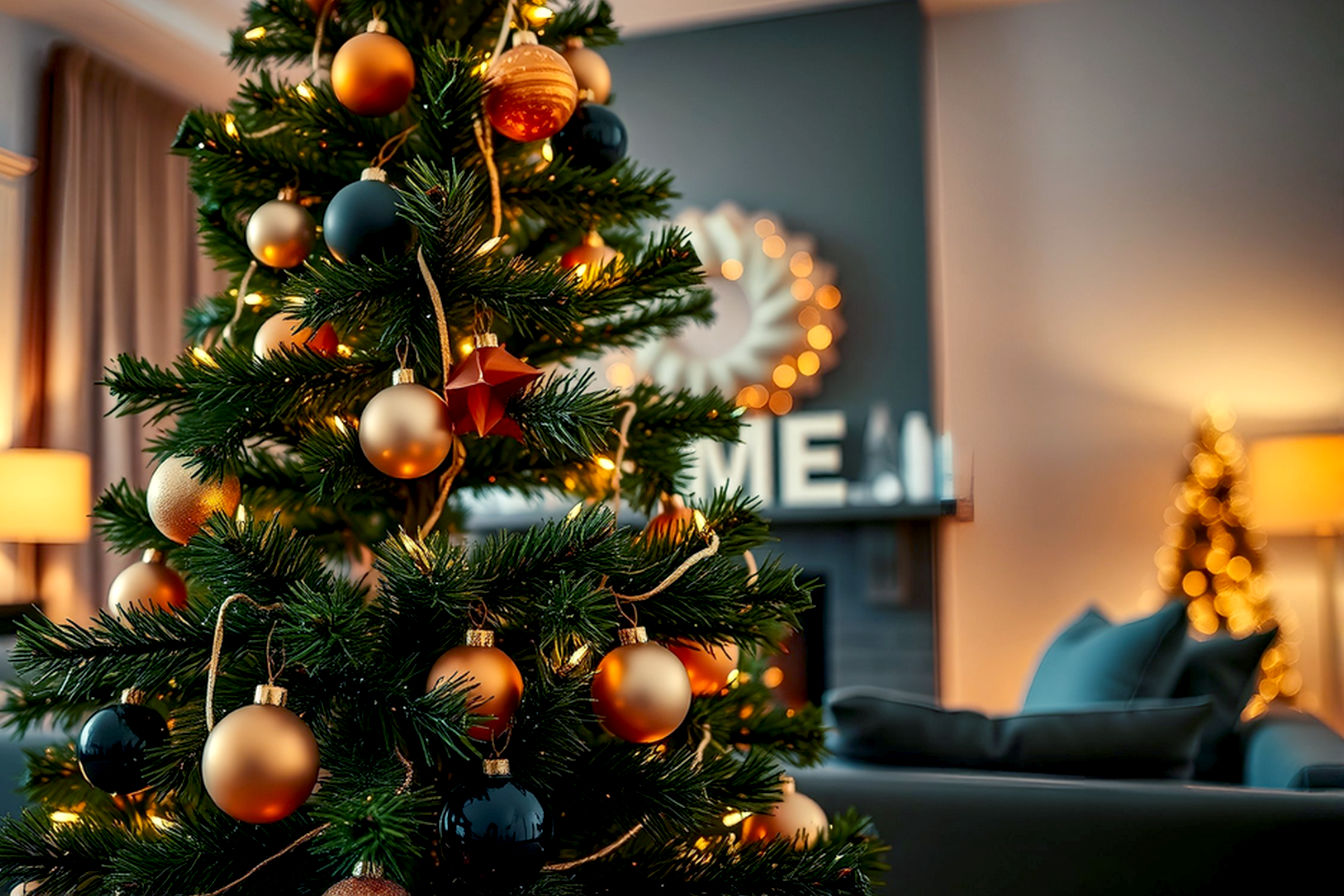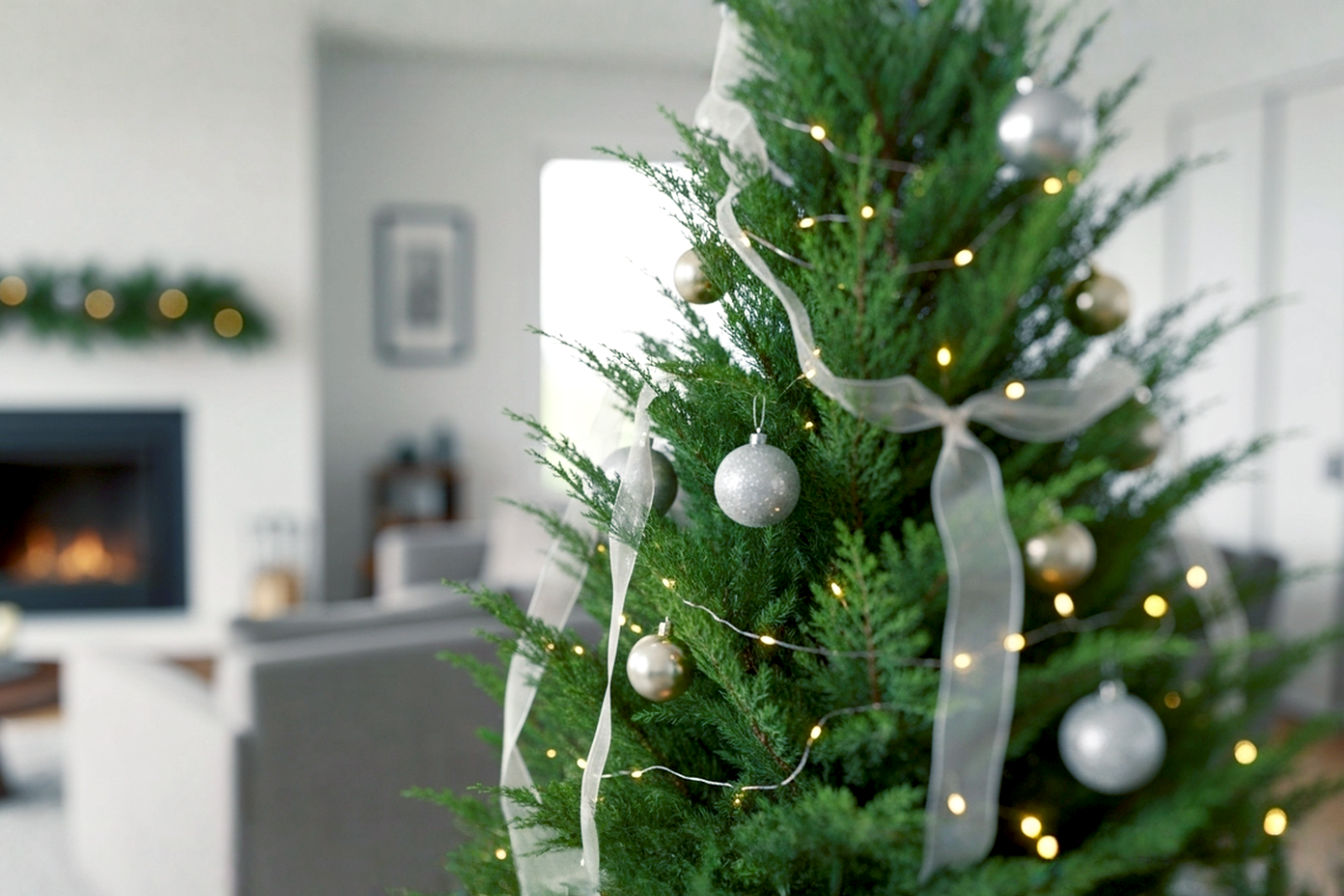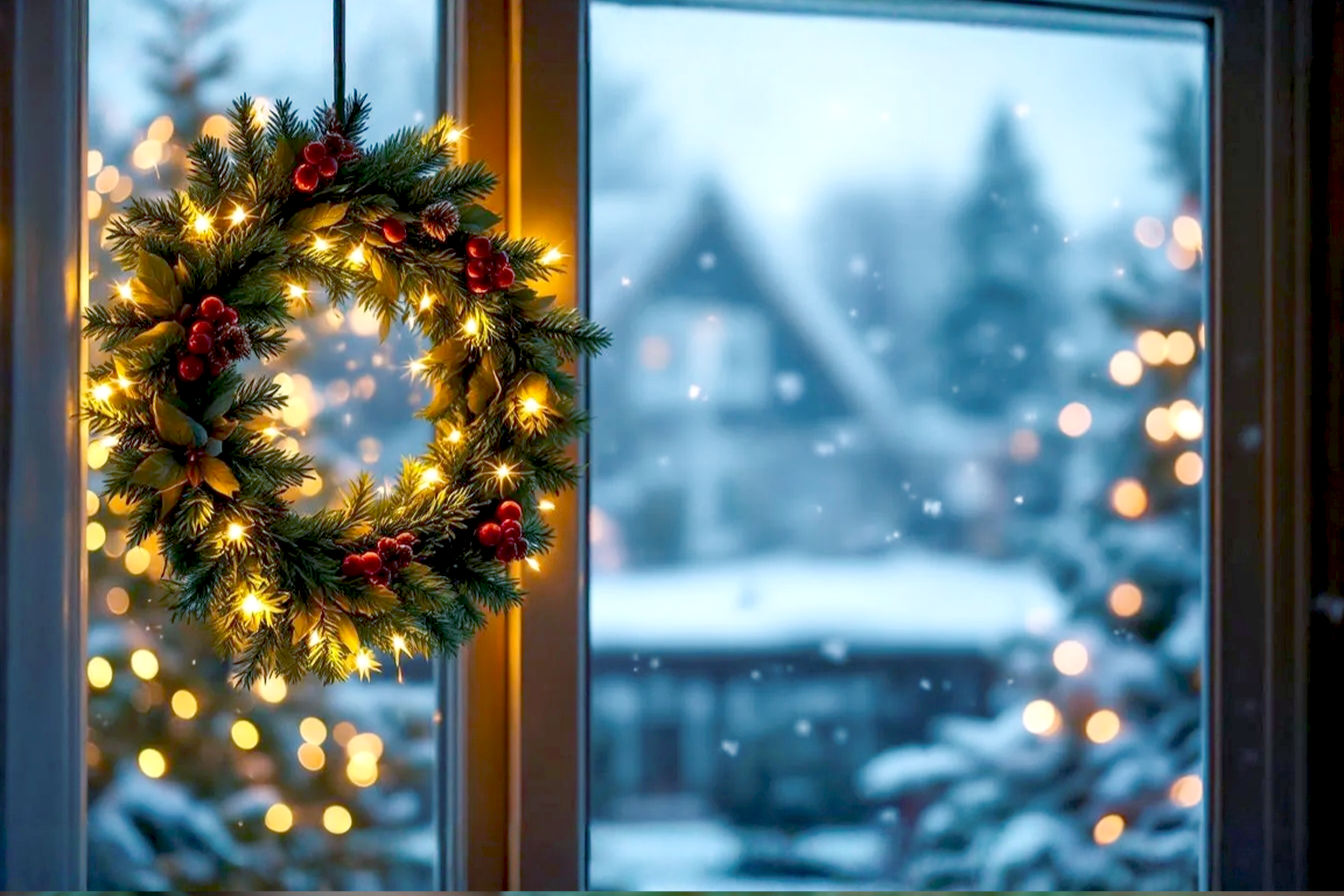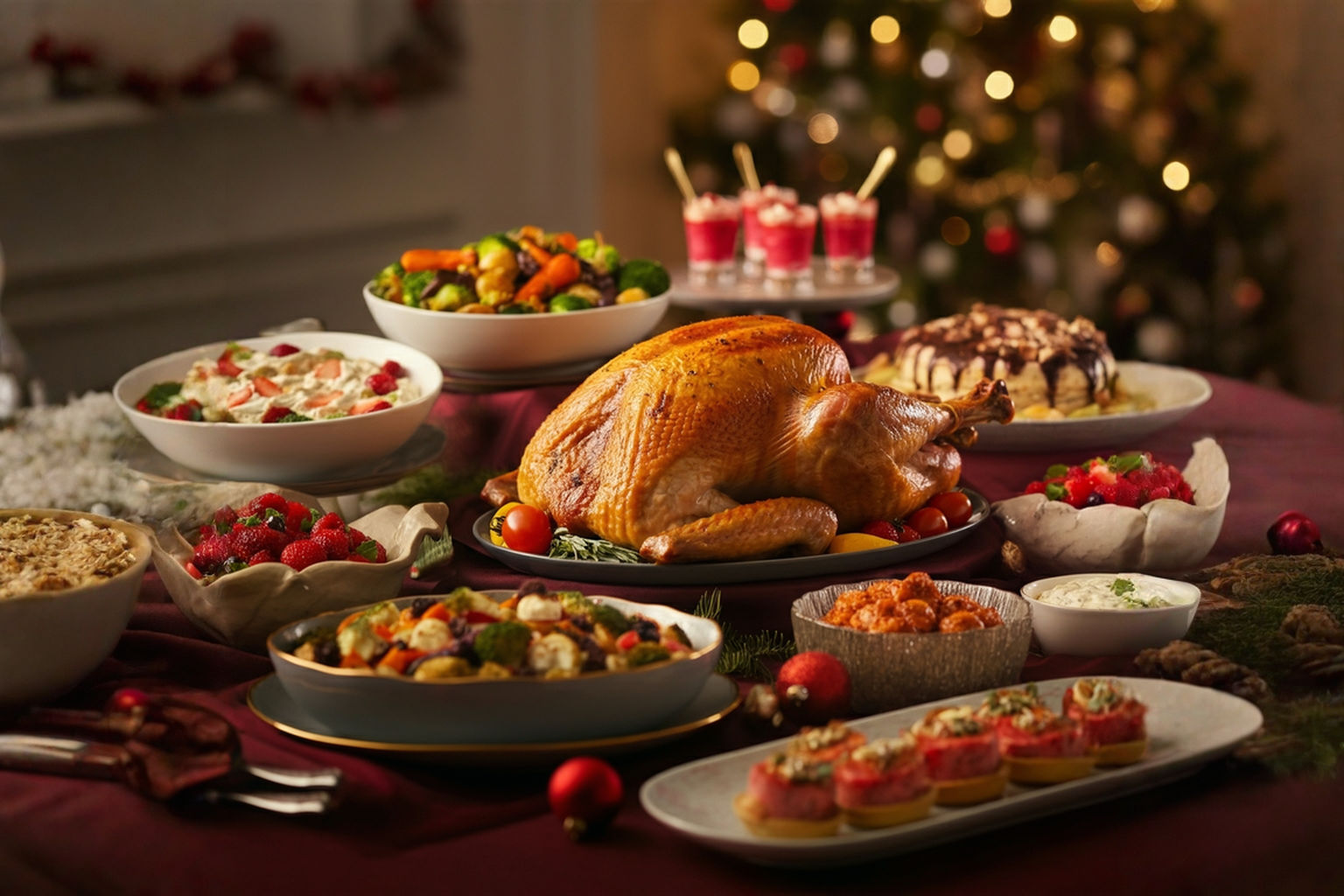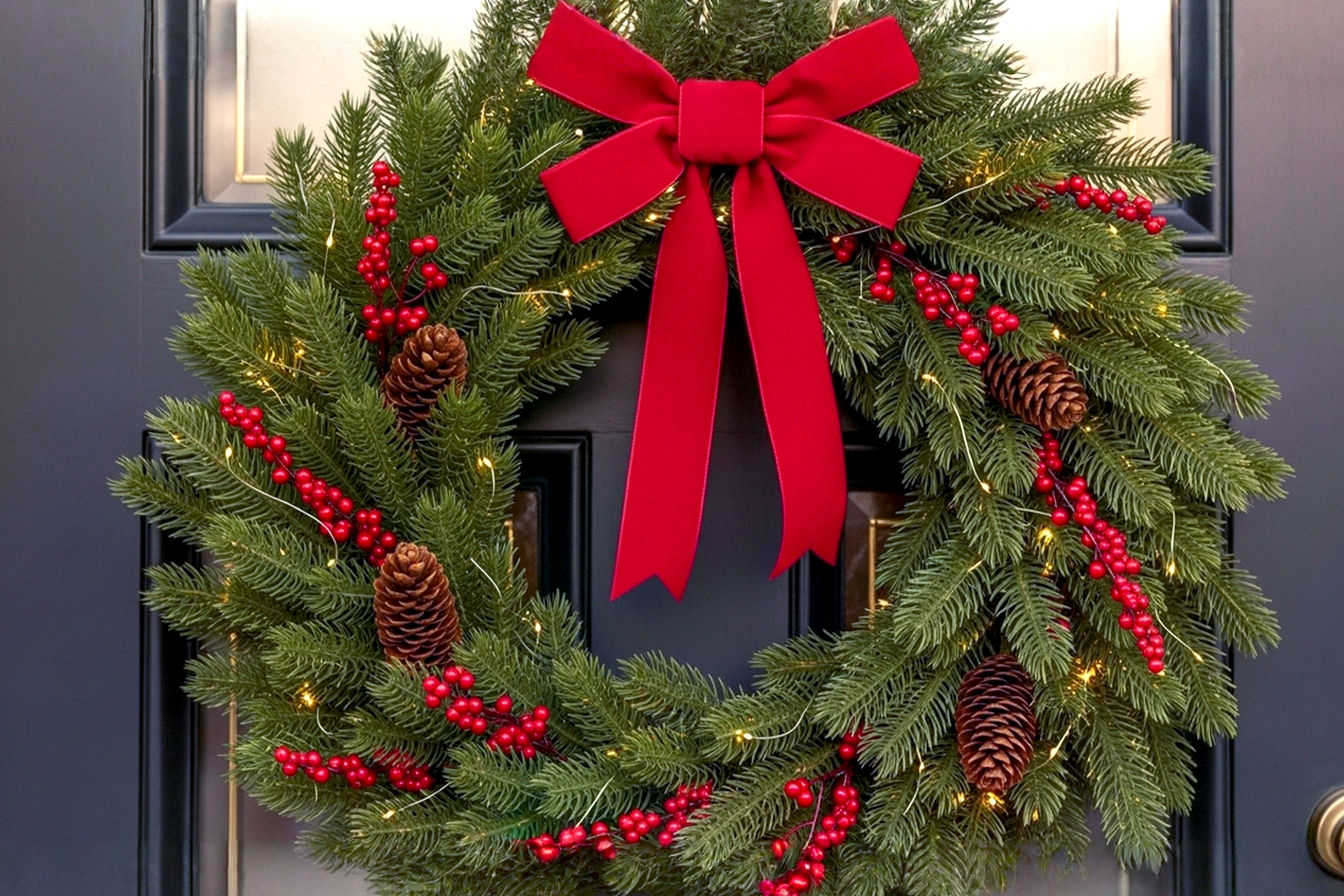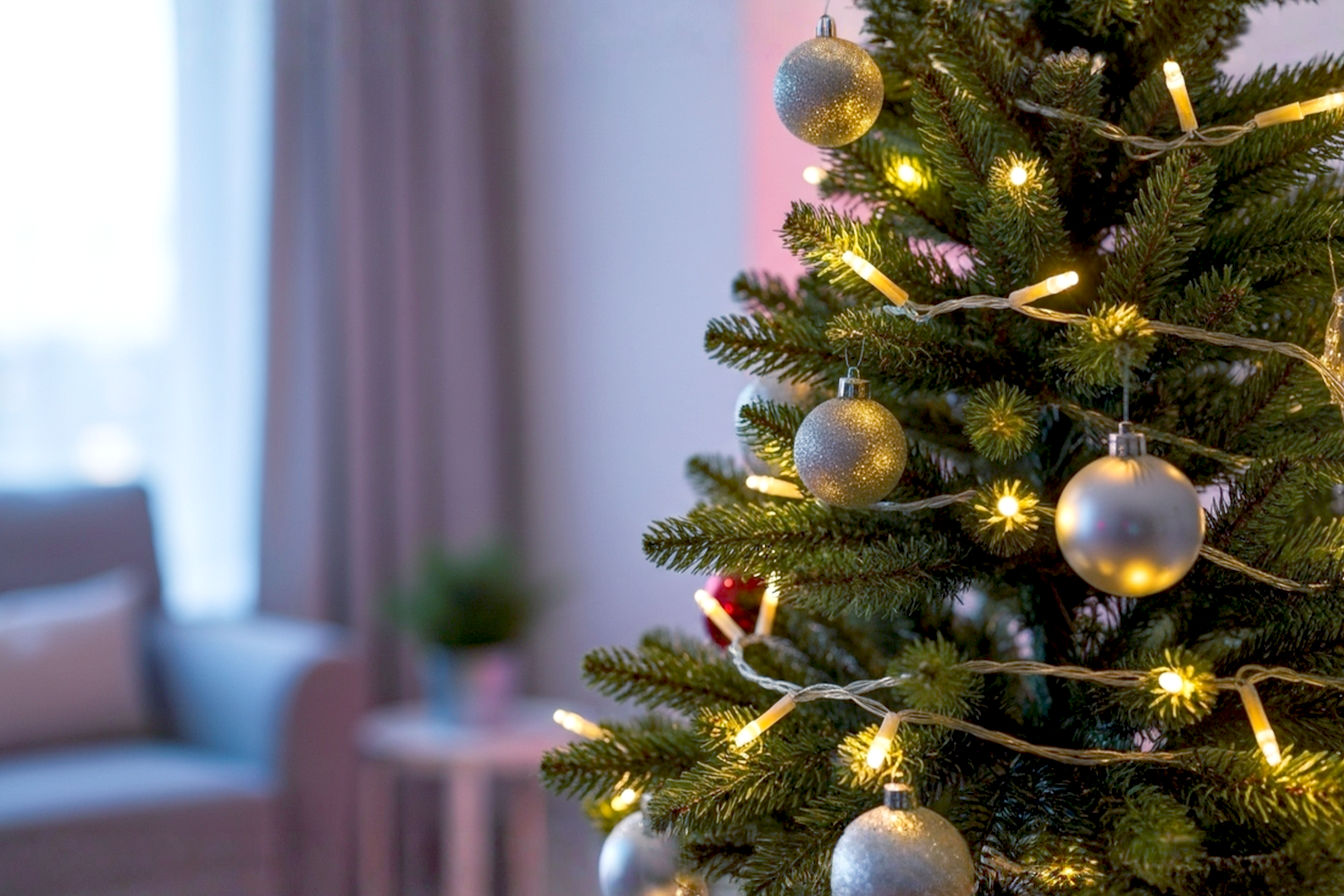This post may contain affiliate links. If you make a purchase through these links, we may earn a commission at no additional cost to you.
Christmas is a magical time, filled with sparkling lights, festive cheer, and the joy of giving. Among the many traditions, decorating the Christmas tree stands out as a beloved ritual, transforming homes into winter wonderlands. But what if you could make that magic even more special, more personal, and more impactful? That’s where custom ornaments bulk come in.
Imagine a Christmas tree adorned with beautiful, unique ornaments that tell a story – your company’s story, a special event’s memory, or a heartfelt message for a fundraising campaign. Buying these personalized treasures in bulk offers incredible opportunities, from creating memorable corporate gifts to launching successful charity initiatives. However, navigating the world of bulk custom ornaments can feel overwhelming. How do you ensure you’re getting quality custom ornaments that truly shine, without breaking the bank or compromising on craftsmanship?
This comprehensive guide is your essential roadmap. We’ll demystify the process, helping you understand everything from choosing the right materials and customization techniques to vetting suppliers and managing logistics. By the end, you’ll feel confident in making smart decisions, ensuring your bulk custom ornaments are not just decorations, but cherished keepsakes that leave a lasting impression. Let’s dive in and discover how to find truly exceptional custom ornaments for your next big project.
Understanding the “Why” and “What” of Bulk Custom Ornaments
Before you start searching for suppliers, it’s really helpful to understand what custom ornaments are and why buying them in large quantities makes so much sense. This foundational knowledge will guide your decisions throughout the entire process.
1.1 What Are Custom Ornaments?
At its simplest, a custom ornament is a decorative item, usually for a Christmas tree, that has been personalized in some way. It’s not just a generic bauble you pick up at a store; it’s something unique, designed to reflect a specific brand, event, or message. This personalization can take many forms, making each piece truly special.
Think about the various ways these items can be made unique. You might see personalized ornaments with a company logo, a family name, a significant date, or even a specific illustration. The customization can involve changing the ornament’s shape, the material it’s made from, or the specific design applied to its surface. For instance, a small business might order a batch of ornaments shaped like their product, or a charity might have their logo printed on classic round baubles. The goal is always to create something distinctive that resonates with the recipient or purpose.
1.2 Why Buy in Bulk?
Buying anything in bulk often comes down to one major factor: cost. This is especially true for bulk custom Christmas ornaments. When you purchase a large quantity, you benefit from what economists call “economies of scale.” This means the more units you order, the lower the cost per unit becomes. Suppliers can offer better prices because their production setup costs (like setting up machines or creating molds) are spread across many items.
Beyond just saving money, buying in bulk ensures consistency. If you’re planning a large event or a widespread marketing campaign, you want every single ornament to look identical and reflect your brand perfectly. A bulk order guarantees that all your items come from the same production run, minimizing variations in color, material, or design application. This consistency is crucial for maintaining a professional image and ensuring everyone receives the same high-quality item. For businesses, this means better brand visibility and a more unified message across all their corporate Christmas gifts.
1.3 Common Uses for Bulk Custom Ornaments
The versatility of bulk custom ornaments makes them incredibly popular for a wide range of applications. They’re not just for decorating trees at home; they serve as powerful tools for marketing, fundraising, and commemoration.
One of the most popular uses is corporate gifting. Businesses often give custom ornaments to clients, employees, and partners during the holiday season. These gifts can feature a company logo, a special holiday message, or even a unique design that represents the company’s values. They serve as a thoughtful reminder of appreciation and keep the brand top-of-mind long after the holidays are over.
For non-profit organizations and schools, fundraising ornaments bulk are a fantastic option. They can sell these unique items to raise money for specific causes or projects. People love buying something tangible and beautiful that also supports a good cause. Imagine a school selling ornaments featuring their mascot or a local landmark to fund new playground equipment.
Event custom ornaments are also a huge hit. Whether it’s a wedding, an anniversary, a grand opening, or a product launch, a custom ornament can serve as a memorable keepsake. Guests and attendees can take home a piece of the event, helping them remember the special occasion for years to come. Retailers, too, often purchase these items in bulk to sell as unique merchandise in their boutiques or gift shops, offering customers something they can’t find anywhere else.
Navigating Quality: Materials, Craftsmanship, and Durability
When you’re buying anything in bulk, especially something meant to be cherished like a Christmas ornament, quality becomes paramount. You don’t want to distribute hundreds of flimsy or poorly made items. Understanding the materials, assessing craftsmanship, and considering durability are crucial steps in securing quality custom ornaments.
2.1 The Foundation: Choosing the Right Materials
The material of your custom ornament dictates its look, feel, durability, and ultimately, its cost. Each material has its own set of advantages and disadvantages, making the choice dependent on your budget, desired aesthetic, and intended use.
2.1.1 Glass Ornaments
Glass custom ornaments exude elegance and a classic holiday feel. They often feature intricate designs and vibrant colors.
- Pros: They offer a truly premium look, are excellent for detailed painting or etching, and have a beautiful reflective quality.
- Cons: They are inherently fragile, meaning they can break easily during shipping or handling. They also tend to be among the more expensive options.
- Types: You’ll find blown glass (often hollow and lightweight), etched glass (where designs are sandblasted or chemically etched onto the surface), and painted glass (with designs applied by hand or machine). The quality of the glass itself, its clarity, and the consistency of its thickness are key indicators of a good glass ornament.
2.1.2 Metal Ornaments
Metal custom ornaments are known for their durability and premium feel. They offer a more robust option compared to glass.
- Pros: They are very durable, can withstand more handling, and offer a sophisticated, often timeless look. They are versatile for various customization methods like engraving and stamping.
- Cons: Metal ornaments are typically heavier than other materials, which can impact shipping costs. They can also be more expensive upfront, depending on the metal type.
- Types: Common metals include brass (known for its golden luster), pewter (a softer, silver-grey alloy that’s great for intricate casting), zinc alloy (cost-effective and versatile for molding), and stainless steel (modern, strong, and resistant to tarnish). The thickness of the metal and the precision of the cut or mold are important for quality.
2.1.3 Wood Ornaments
For a natural, rustic, and often eco-friendly appeal, wooden custom ornaments are an excellent choice.
- Pros: They are lightweight, durable enough for general handling, and offer a warm, earthy aesthetic. Many wood options are sustainable.
- Cons: Wood can sometimes warp if exposed to extreme humidity or temperature changes. It might also not be suitable for extremely fine, intricate details like those possible on glass or metal, depending on the wood grain.
- Types: Laser-cut wood allows for precise shapes and designs, while engraved wood creates a tactile, debossed effect. They can also be painted or stained. The type of wood (e.g., birch, maple, bamboo) affects its grain, color, and how well it takes customization.
2.1.4 Ceramic/Porcelain Ornaments
Ceramic custom ornaments and porcelain ornaments provide a smooth, elegant surface, ideal for vibrant printed designs.
- Pros: They offer a beautiful, classic look with a smooth finish that’s perfect for high-resolution printing and detailed artwork. They often feel substantial and high-quality.
- Cons: Like glass, they are fragile and can break if dropped. They can also be quite heavy, impacting shipping.
- Technical: Porcelain is a type of ceramic fired at very high temperatures, making it denser and less porous. The quality depends on the clay composition, firing temperature, and glazing process, which affects durability and print clarity.
2.1.5 Acrylic/Plastic Ornaments
Acrylic custom ornaments and plastic options are often chosen for their versatility and affordability.
- Pros: They are very durable and lightweight, making them less prone to breakage and cheaper to ship. They can be molded into almost any shape and come in a wide range of colors, including clear.
- Cons: While durable, they can sometimes look less “premium” than glass or metal. Lower-quality plastics might scratch easily or yellow over time.
- Technical: Acrylic (Plexiglas) is a type of clear plastic known for its transparency and shatter resistance. Other plastics like PVC or polystyrene are also used. Quality is determined by the grade of plastic, the molding precision, and any protective coatings applied.
2.1.6 Other Materials
Briefly, materials like resin allow for highly detailed, often three-dimensional designs, while fabric ornaments can offer a soft, cozy, or whimsical touch. Each has niche applications and unique characteristics.
2.2 Assessing Craftsmanship and Finish
Choosing the right material is just the first step. The true mark of quality ornament materials and production lies in the craftsmanship and final finish. This is where attention to detail really matters.
2.2.1 Detail and Precision
When examining samples, look closely at the detail and precision of the design. Are lines sharp and crisp, or do they appear blurry or jagged? Is text perfectly legible, even if it’s small? Are colors applied accurately within their boundaries, without bleeding or smudging? For engraved or die-cast ornaments, check that the edges are clean and the details are well-defined, not muddy or indistinct. High-quality production means a keen eye for these minute elements.
2.2.2 Finish Quality
The finish quality refers to the overall look and feel of the ornament’s surface. It should be smooth and consistent, without any rough patches, bubbles, or uneven coatings. If it’s painted, the color should be uniform, with no drips, streaks, or bare spots. For metallic finishes, check for consistent plating and an absence of scratches or tarnishing. Any blemishes, even small ones, can significantly detract from the perceived quality of a bulk order. This is a critical aspect of ornament craftsmanship.
2.2.3 Durability Factors
You want your ornaments to last, not fall apart before the next Christmas. Durability factors include how well the design will last without fading or chipping, and the overall structural integrity of the ornament. For printed designs, ask about the type of ink used and its resistance to UV light and scratching. For metal or wood, ensure there are no weak points or areas prone to breaking. A high-quality ornament should feel solid and well-constructed, designed to be enjoyed for many holiday seasons.
2.3 The Importance of Safe Materials
Beyond aesthetics and durability, safety is a non-negotiable aspect of quality, especially for items that might be handled by children. Ensure that your chosen supplier uses non-toxic paints and lead-free metals. Many countries have strict regulations regarding consumer product safety. For example, in the United States, the Consumer Product Safety Improvement Act (CPSIA) sets standards for products intended for children. Even if your ornaments aren’t specifically for kids, adhering to such standards demonstrates a commitment to safety and quality. Always ask suppliers about their material safety certifications and compliance with relevant regulations.
Customization Deep Dive: Bringing Your Vision to Life
Once you’ve considered materials and general quality, the next step is to understand how your specific design will be applied to the ornaments. This is where your vision truly comes to life, and knowing the different customization techniques will help you make informed decisions.
3.1 Design Considerations for Bulk Orders
Designing a single ornament is different from designing thousands. When creating a design for bulk custom ornaments, simplicity and clarity are often your best friends. Intricate details that look great on a screen might get lost or become blurry during mass production, especially on smaller items.
Think about simplicity for mass production. A clean, bold logo or a straightforward message will reproduce far more consistently and cost-effectively than a complex, multi-color illustration. Always keep your brand guidelines and consistency in mind. Ensure your logo, colors, and fonts are used correctly and consistently across all ornaments. The design should also have readability and impact at a glance. People should be able to quickly understand the message or recognize the brand without having to squint or study the ornament for too long. This is key for effective designing custom ornaments.
3.2 Customization Techniques Explained
The method used to apply your design significantly impacts the final look, feel, and cost of your ornaments. Understanding these techniques is crucial for effective custom ornament manufacturing process.
3.2.1 Printing (UV, Screen, Digital)
Printing is a common method for applying logos, images, and text onto flat or slightly curved surfaces.
- UV Printing: This technique uses ultraviolet (UV) lights to cure or dry ink as it’s printed.
- Pros: UV printing is incredibly versatile, working on almost any material (glass, metal, wood, plastic). It produces vibrant, full-color designs that are very durable and resistant to scratching and fading. The ink dries instantly, speeding up production.
- Technical: UV inks contain photoinitiators that react with UV light, causing them to solidify rapidly. This process, known as “curing,” creates a strong bond between the ink and the substrate, resulting in excellent ink adhesion and durability. The printer lays down multiple layers of ink, including white ink, to ensure vibrancy on dark or clear materials.
- Screen Printing: A traditional method where ink is pushed through a mesh screen onto the surface.
- Pros: It’s very cost-effective for large runs with simple designs and a limited number of colors. It creates a thick, opaque layer of ink, resulting in bold colors.
- Cons: Not ideal for complex, multi-color images or gradients. Each color requires a separate screen, increasing setup costs for intricate designs.
- Technical: A stencil of the design is created on a mesh screen. Ink is then forced through the open areas of the mesh onto the ornament. After each color is applied, the ornament typically goes through a drying or curing process (e.g., heat curing for plastisol inks) before the next color is added.
- Digital Printing: Similar to an office inkjet printer, but on a larger, industrial scale.
- Pros: Excellent for full-color, intricate designs, gradients, and even photographic images. It’s also good for smaller batches or variable data printing (e.g., individual names on each ornament) because there are minimal setup costs per design.
- Cons: Can be slower than screen printing for very large runs of simple designs. The durability of the print can vary depending on the ink and material.
- Technical: Digital printers directly apply ink droplets onto the ornament’s surface based on a digital file. There are no screens or plates required, which makes it highly flexible. The type of ink (e.g., solvent, aqueous, UV) and the printer’s resolution determine the final quality.
3.2.2 Engraving (Laser, Rotary)
Engraving creates a recessed design by removing material from the surface.
- Laser Engraving: Uses a focused laser beam to vaporize or melt material, creating a precise mark.
- Pros: Extremely precise, capable of very fine details and intricate patterns. It works well on wood, metal, acrylic, and some glass. It creates a clean, permanent mark.
- Technical: The laser power and speed are carefully controlled to achieve the desired depth and darkness of the engraving. For example, on wood, a higher power might create a darker, deeper burn, while on metal, it might just mark the surface. The interaction between the laser and the material interaction determines the final appearance.
- Rotary Engraving: Uses a rotating cutting tool to carve into the material.
- Pros: Creates a deeper, more traditional, and very durable mark. Ideal for metals and some harder plastics.
- Cons: Less precise than laser engraving for very fine details. Slower and can be more expensive.
3.2.3 Debossing/Embossing
These techniques create a three-dimensional effect by either pressing a design into the surface (debossing) or raising it above the surface (embossing).
- Pros: Creates a sophisticated, tactile effect. Often used for metal or leather-like materials.
- Technical: This involves creating a custom die (a metal stamp) with the design. The ornament material is then pressed between the die and a counter-die under significant pressure application to create the raised or recessed effect.
3.2.4 Die-Casting/Molding
For custom shapes and highly sculptural designs, die-casting or molding is the go-to method.
- Pros: Allows for completely custom, three-dimensional shapes beyond simple flat cut-outs. Common for metal, resin, or plastic ornaments.
- Technical: A custom mold creation process is involved, often using CNC machining to carve the mold cavity. Molten metal (for die-casting) or liquid resin/plastic (for molding) is then injected or poured into the mold. Once cooled and solidified, the ornament is removed. This method is essential for unique custom ornament manufacturing process for complex shapes.
3.2.5 Hand Painting/Finishing
While less common for truly bulk orders due to cost and consistency, some high-end or specialized custom ornaments might involve hand painting or finishing.
- Pros: Adds a unique, artisanal touch.
- Cons: Significantly higher cost per unit, and consistency across thousands of items can be a challenge.
3.3 Color Matching and Proofing
Getting your colors right is absolutely essential for brand consistency and overall satisfaction. This is where color matching ornaments becomes critical.
Most professional suppliers will work with the Pantone Matching System (PMS). This is a standardized system of color reproduction, where each color is assigned a unique number. If your brand uses specific PMS colors, provide these to your supplier. This ensures that the red on your ornament is the exact same red as your logo on your website or business cards. In contrast, CMYK (Cyan, Magenta, Yellow, Key/Black) is a four-color printing process used for full-color images, but it can have slight variations depending on the printer and material. Always specify PMS colors if precision is vital.
The importance of physical proofs cannot be overstated. Before mass production begins, always request a physical sample of your custom ornament. This proof allows you to inspect the material, the craftsmanship, the accuracy of the design, and most importantly, the color matching. Digital proofs are helpful, but they can’t fully capture how a color will look on a specific material or under different lighting conditions. A physical proof is your final chance to catch any errors or make adjustments before committing to the full order. This step is a cornerstone of effective ornament proofing.
The Procurement Process: Finding and Vetting Suppliers
Finding the right supplier is arguably the most critical step in securing quality custom ornaments bulk. A good supplier will not only deliver on quality and price but also communicate effectively and ensure a smooth process.
4.1 Where to Find Bulk Ornament Suppliers
The search for a reliable supplier can start in several places, each with its own advantages.
Online marketplaces like Alibaba or Made-in-China are popular for finding international manufacturers offering competitive prices. They provide a vast selection, but require careful vetting due to the sheer number of options. You’ll find many bulk ornament suppliers here.
Trade shows and industry events are excellent for meeting suppliers face-to-face. You can inspect samples, discuss your needs directly, and build relationships. Look for events related to promotional products, giftware, or holiday decorations.
Direct manufacturers/wholesalers who specialize in custom promotional items or holiday decor often have dedicated sales teams. Searching for “wholesale custom ornaments” or “custom ornament manufacturers” can lead you to these companies. They often offer more personalized service and deeper expertise.
Finally, referrals from trusted colleagues, other businesses, or industry contacts can lead you to highly reputable suppliers who have already proven their worth. This is often the safest route to finding reliable partners.
4.2 Key Criteria for Supplier Vetting
Once you have a list of potential suppliers, it’s time to vet them thoroughly. This process helps you identify a partner who can meet your quality, budget, and timeline requirements. This is the essence of supplier vetting custom ornaments.
4.2.1 Experience and Reputation
How long has the supplier been in business? Do they have a proven track record with bulk orders? Look for client testimonials, case studies, and online reviews. A supplier with extensive experience is more likely to anticipate and resolve potential issues.
4.2.2 Production Capacity
Can they handle your desired volume within your timeframe? A smaller supplier might struggle with a very large order, leading to delays or quality issues. Discuss their production capacity upfront and ask about their typical lead times for similar order sizes.
4.2.3 Quality Control Processes
Inquire about their quality control processes. Do they have an in-house QC team? What steps do they take to ensure consistency and quality throughout production? Do they have any relevant certifications (e.g., ISO 9001 for quality management)? A robust QC system is a strong indicator of a reliable supplier.
4.2.4 Communication and Responsiveness
Effective communication and responsiveness are crucial, especially when dealing with custom orders. How quickly do they respond to inquiries? Are their explanations clear and comprehensive? Do they have a dedicated account manager? Poor communication can lead to misunderstandings and costly mistakes.
4.2.5 Pricing and Payment Terms
While cost is important, don’t just go for the lowest price. Look for transparency in their pricing and payment terms. Are there any hidden fees? Do they offer flexible payment schedules (e.g., a deposit upfront and the remainder upon completion or delivery)? A good supplier will be upfront about all costs.
4.2.6 Sample Policy
A supplier’s sample policy is incredibly important. Can you get a physical sample of a previous similar product, or even better, a pre-production sample of your actual custom ornament design? This is your best way to verify quality before committing to a large order. If a supplier is hesitant to provide samples, it’s a red flag.
4.3 The Request for Quote (RFQ) Process
Once you’ve shortlisted a few suppliers, you’ll send out a Request for Quote (RFQ). This document formally outlines your needs and asks for a detailed price breakdown.
Your RFQ should be as detailed as possible to ensure accurate quotes. It should include:
- Quantity: The exact number of ornaments you need.
- Material: Your preferred material (e.g., glass, metal, wood) and any specific finishes.
- Design: Attach your artwork files (vector files are best) and provide clear instructions on customization techniques (e.g., UV print, laser engraving).
- Deadline: Your desired delivery date.
- Packaging: Specify if you need individual packaging or bulk packaging.
- Any other specific requirements, like safety certifications.
Always aim for getting multiple quotes from different suppliers. This allows you to compare not just the custom ornament pricing, but also their proposed solutions, lead times, and communication styles. Comparing these quotes helps you make the most informed decision for your bulk order considerations.
Logistics and Delivery: Packaging, Shipping, and Timelines
Even the most beautiful custom ornaments won’t do you any good if they don’t arrive on time and intact. Understanding the logistics of packaging, shipping, and production timelines is vital for a successful bulk order.
5.1 Packaging for Protection and Presentation
The way your ornaments are packaged serves two main purposes: protection during transit and presentation upon arrival.
Individual packaging often involves small boxes, velvet pouches, or clear plastic clamshells for each ornament. This offers maximum protection against breakage, especially for fragile materials like glass or ceramic. It also enhances the perceived value and makes the ornaments ready for individual distribution as gifts or retail items. This is a key aspect of packaging custom ornaments bulk.
Bulk packaging, on the other hand, means ornaments are packed together in trays or larger master cartons, often with dividers or protective foam inserts. This is more cost-effective for shipping, but individual ornaments might still need some basic wrapping (like tissue paper) to prevent scratching. Consider your end-use: if you’re distributing them individually, individual packaging is worth the extra cost. If they’re going into larger gift baskets or just being stored, bulk packaging might suffice. Also, ask about eco-friendly options like recycled cardboard or biodegradable materials if sustainability is important to your brand.
5.2 Shipping Methods and Costs
Shipping can be a significant portion of your total cost, especially for heavy or bulky items. Understanding the options helps you plan your budget and timeline. This is crucial for shipping custom ornaments wholesale.
- Air freight is the fastest option, ideal if you have tight deadlines. However, it’s also the most expensive, calculated by weight and volume.
- Sea freight (ocean shipping) is much slower but significantly more cost-effective for large, heavy bulk orders. This is the preferred method if you have plenty of lead time.
- Express shipping (e.g., DHL, FedEx, UPS) is a premium service for smaller, urgent shipments, offering door-to-door delivery and tracking.
- Standard shipping is a more economical ground or sea option for less urgent deliveries.
Always clarify who is responsible for customs and duties. These are taxes and fees levied by your country’s government on imported goods. Incoterms (International Commercial Terms) like FOB (Free On Board) or DDP (Delivered Duty Paid) define who pays for what and when responsibility transfers. Make sure these are clearly stated in your contract to avoid unexpected charges.
5.3 Understanding Lead Times and Deadlines
The lead times custom ornaments require can vary significantly based on the complexity of the design, the material, the customization method, and the supplier’s current workload. It’s not just about how long it takes to make the ornaments.
The overall timeline typically includes:
- Design phase: Time for you to finalize your artwork and for the supplier to create proofs.
- Production: The actual manufacturing time, which can range from a few weeks to several months for very large or complex orders.
- Shipping: As discussed, this can be days for air freight or many weeks for sea freight.
It’s absolutely critical to consider peak season considerations, especially around Christmas. Suppliers get extremely busy during the fall months leading up to the holidays. If you need your ornaments for Christmas, you should ideally place your order in late spring or early summer to avoid rush fees, delays, and limited production slots. Always build in buffer time to your schedule. Unexpected delays can happen (customs issues, production glitches, shipping disruptions), so having an extra week or two built into your plan can save you a lot of stress.
Cost Management and Budgeting for Bulk Orders
Understanding the true cost of your bulk custom ornaments goes beyond the per-unit price. There are several factors that influence the final bill, and hidden costs that can surprise you if you’re not prepared. Effective budgeting is key to a successful project.
6.1 Factors Influencing Cost
The cost of custom ornaments bulk is a dynamic figure, shaped by several interconnected choices you make.
- Material choice: As we discussed, glass and metal are generally more expensive than plastic or wood. Premium materials inherently carry a higher price tag.
- Complexity of design: A simple logo print will be cheaper than an intricate, multi-color design that requires multiple passes or complex molding.
- Customization method: Laser engraving or die-casting often involve higher setup costs than simple digital printing. The more specialized the technique, the more it typically costs.
- Quantity: This is one of the biggest drivers. The more units you order, the lower the per-unit price due to economies of scale. Suppliers have fixed costs (like machine setup) that get spread out over more items.
- Packaging: Individual gift boxes or custom-printed packaging will add to the cost compared to basic bulk packaging.
6.2 Hidden Costs to Watch Out For
While a supplier’s quote provides a baseline, be aware of potential hidden costs that can inflate your budget.
- Setup fees: Many suppliers charge a one-time fee for setting up their machines, creating screens for screen printing, or preparing files for digital printing.
- Mold fees: If your ornament requires a custom shape (e.g., die-cast metal, molded plastic), there will likely be a significant one-time mold creation fee. This can be hundreds or even thousands of dollars, but it’s usually a one-time charge for future reorders.
- Proofing fees: While some suppliers offer digital proofs for free, physical pre-production samples often incur a charge, especially if you request multiple revisions.
- Shipping insurance: This is highly recommended, especially for fragile items or high-value orders. It protects you in case of damage or loss during transit.
- Customs duties and taxes: As mentioned, for international orders, you’ll need to factor in import duties, tariffs, and local taxes. Always clarify who is responsible for these.
- Rush fees: If you need your order faster than the standard lead time, expect to pay a premium.
Always ask for a detailed, itemized quote that breaks down all potential charges.
6.3 Strategies for Cost-Effectiveness
Even with all these factors, there are smart ways to manage your budget and get the best value for your money.
- Ordering larger quantities is the most straightforward way to reduce your per-unit cost. If you anticipate needing more ornaments in the future, it might be more economical to order a larger batch now than to place two smaller orders later.
- Simplifying designs can significantly cut costs. Fewer colors, less intricate details, and standard shapes often translate to lower production expenses.
- Choosing cost-effective materials like acrylic or wood over glass or high-end metals can help if your budget is tight, while still allowing for beautiful customization.
- Finally, don’t be afraid of negotiating with suppliers. Especially for very large orders, there might be some room for negotiation on pricing, payment terms, or even a waiver of certain setup fees. Building a good relationship with a supplier can also lead to better deals on future orders.
Common Pitfalls and How to Avoid Them
Even with careful planning, things can go wrong. Being aware of common pitfalls in the bulk custom ornament ordering process can help you avoid costly mistakes and ensure a smooth experience.
7.1 Neglecting Quality Checks
One of the biggest mistakes is assuming that because you’re ordering from a reputable supplier, every single ornament will be perfect. This is rarely the case, especially with bulk orders. Neglecting quality checks can lead to receiving a large batch of unusable or substandard items.
- Importance of samples: Always, always, always get a physical pre-production sample. This is your first and most critical quality check. Inspect it meticulously for material quality, design accuracy, color matching, and overall craftsmanship.
- Inspections: For very large orders, consider hiring a third-party inspection service, especially if ordering from overseas. They can perform random checks during production and a final inspection before shipment, providing you with a detailed report and photos. This small investment can save you from a huge headache later.
7.2 Poor Communication
Misunderstandings are a common source of errors in custom orders. Poor communication with your supplier can lead to incorrect designs, wrong materials, missed deadlines, or unexpected costs.
- Be clear and specific: Provide all design files in the correct format (vector files like AI, EPS, SVG are usually preferred). Clearly state your requirements for materials, colors (using PMS codes), dimensions, and packaging.
- Document everything: Keep a written record of all communications, approvals, and changes. Emails are great for this. If you have a phone conversation, follow up with an email summarizing what was discussed and agreed upon.
- Ask questions: If anything is unclear in a quote or a proof, ask for clarification. Don’t make assumptions.
7.3 Underestimating Lead Times
As discussed earlier, the total time from placing an order to receiving it can be substantial, especially for custom bulk items. Underestimating lead times is a frequent cause of missed deadlines, particularly for seasonal items like Christmas ornaments.
- Plan far ahead: For Christmas ornaments, aim to place your order in late spring or early summer. This gives you ample time for production, shipping, and any unforeseen delays.
- Factor in all stages: Remember to account for design approval, proofing, production, quality control, and shipping when calculating your timeline. Don’t just rely on the “production time” quoted by the supplier.
7.4 Ignoring Contracts/Agreements
A formal contract or detailed purchase agreement protects both you and the supplier. Ignoring contracts/agreements can leave you vulnerable if something goes wrong.
- Review thoroughly: Read all terms and conditions carefully before signing. Pay attention to payment terms, cancellation policies, quality guarantees, return policies, and intellectual property rights (who owns the design).
- Ensure clarity on Incoterms: For international orders, confirm the Incoterms (e.g., FOB, DDP) to understand who is responsible for shipping costs, insurance, and customs duties at each stage.
- Dispute resolution: Understand the process for resolving disputes if issues arise.
7.5 Not Budgeting for Contingencies
Even with the most meticulous planning, unexpected costs can pop up. Not budgeting for contingencies can throw your entire project off track.
- Allocate a buffer: Always set aside an extra 10-15% of your total budget for unexpected expenses. This could cover rush shipping if there’s a delay, a small reorder if some items are damaged, or unforeseen customs fees.
- Understand minimum order quantities (MOQs): Be aware that suppliers have MOQs. If your needs change slightly, you might still have to order the MOQ, even if it’s more than you now need.
By being proactive and mindful of these common pitfalls, you can significantly increase your chances of a smooth, successful, and satisfying experience when buying quality custom ornaments bulk.
Conclusion
Finding quality custom ornaments bulk for Christmas or any special occasion doesn’t have to be a daunting task. By following a smart, strategic approach, you can transform a complex process into a rewarding experience, resulting in beautiful, impactful keepsakes that truly stand out.
Remember to plan thoroughly, starting with a clear understanding of your “why” and “what.” Prioritize quality by carefully selecting materials, scrutinizing craftsmanship, and ensuring safety standards are met. Take the time to vet suppliers meticulously, looking beyond just price to consider their experience, communication, and quality control processes. Finally, manage logistics by understanding packaging options, shipping methods, and realistic timelines, always building in that crucial buffer time.
The magic of custom ornaments lies in their ability to tell a story, evoke a memory, or reinforce a message. When you invest in quality, these ornaments become more than just decorations; they become cherished symbols of your brand, your cause, or your special event. With this guide in hand, you’re now equipped to make smart decisions and ensure your bulk custom ornaments are not just good, but truly exceptional. May your holiday season, and your projects, be filled with sparkling success!

